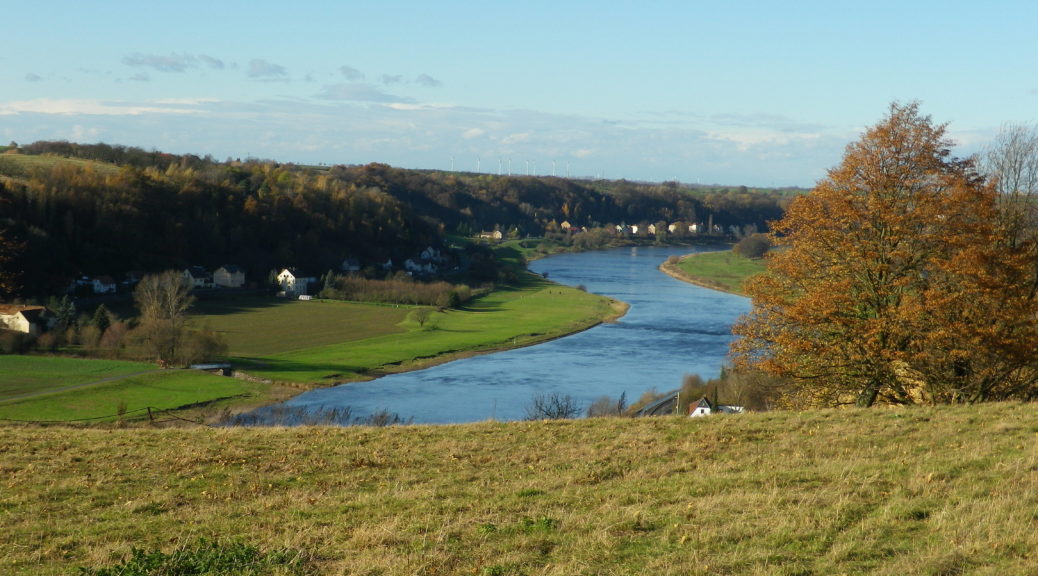Germany’s eastern-most wine producing region is in the region of Saxony, starting not far from the eastern borders Germany shares with Poland and the Czech Republic. Culturally, Saxony has a lot on offer for any culture maven; Historically, from the Carolingian era forward, Saxony played a tremendous role in the political vicissitudes of the German speakers in this region of central Europe, with monuments of all sorts to prove it; Additionally, the Saechsische Schweiz (Saxon Switzerland) region, with its famous rock formations like the Bastei and Lilienstein, provides magnificent hiking trails for visitors to enjoy!
Naturally, the hiking trail I chose was a wine-themed trail. This far east and north, vines usually require a body of water to help moderate the temperatures. In this case, the vineyards primarily flank the right bank of the Elbe River. The trail itself followed through these vineyards, and through several villages, towns and cities associated with wine-making. This trail, almost 90 kilometers long, covers much of the vineyard area for which this part of Saxony is famous, interrupted, if you will, by the huge city of Dresden. Not having time to complete the whole trail, I had to choose one segment. I had previously visited Dresden, itself an important city culturally and historically, but never got to Meissen, home to the famous porcelain factory. Thus, I decided to start in vineyards on the southern edge of Meissen, and hike to the end of the trail.
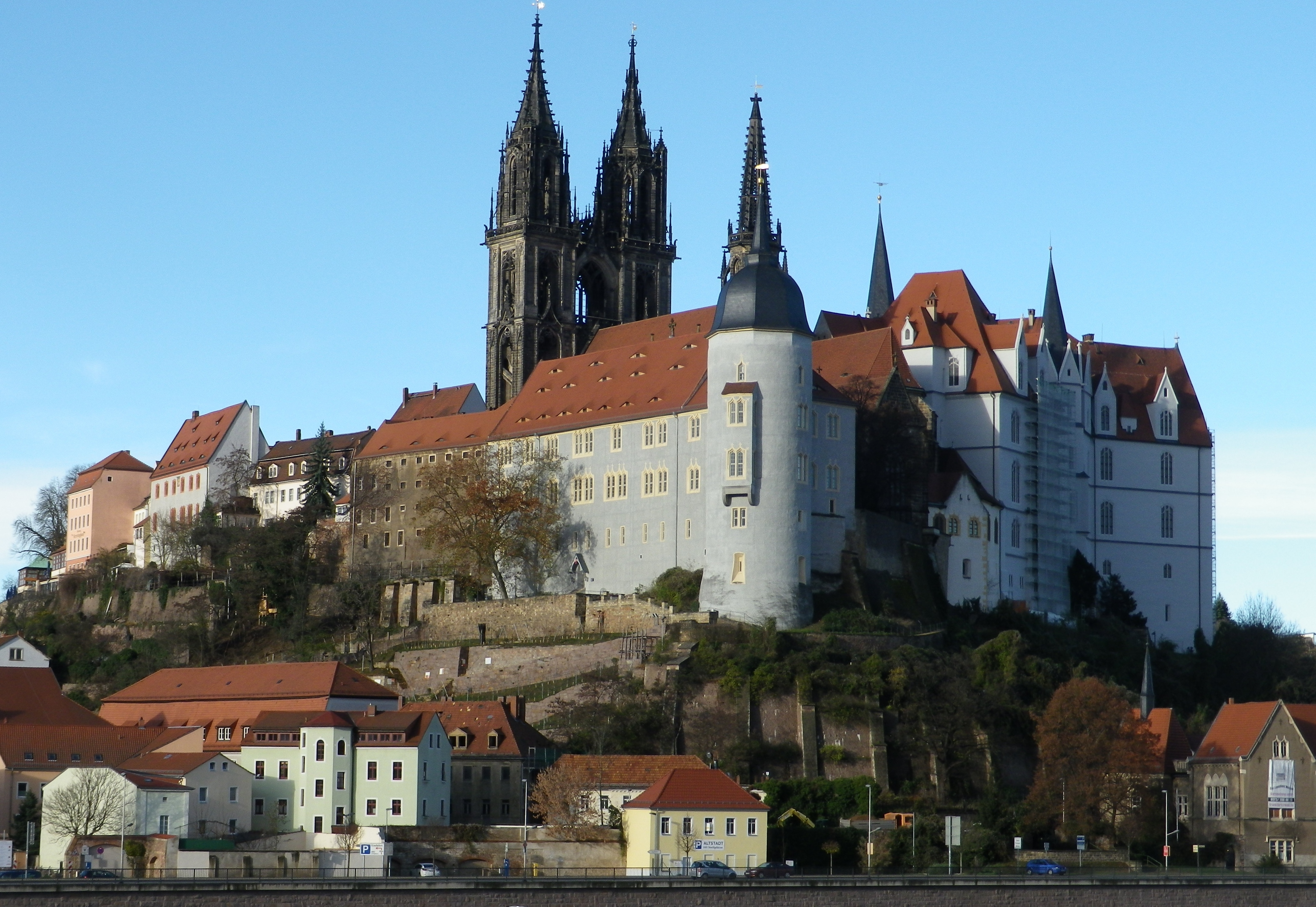
Once past the vineyards on the southern edge of Meissen, the trail followed along the right bank of the Elbe. Approaching the center part of the town, which spans both sides of the river, the old private homes became elegant, and other historical buildings on the mount on the left bank, the palace and the cathedral especially, stood out against the sky. While the regime in East Germany did not construct notable buildings in the second half of the twentieth century, private builders in earlier eras certainly created some fascinating works.
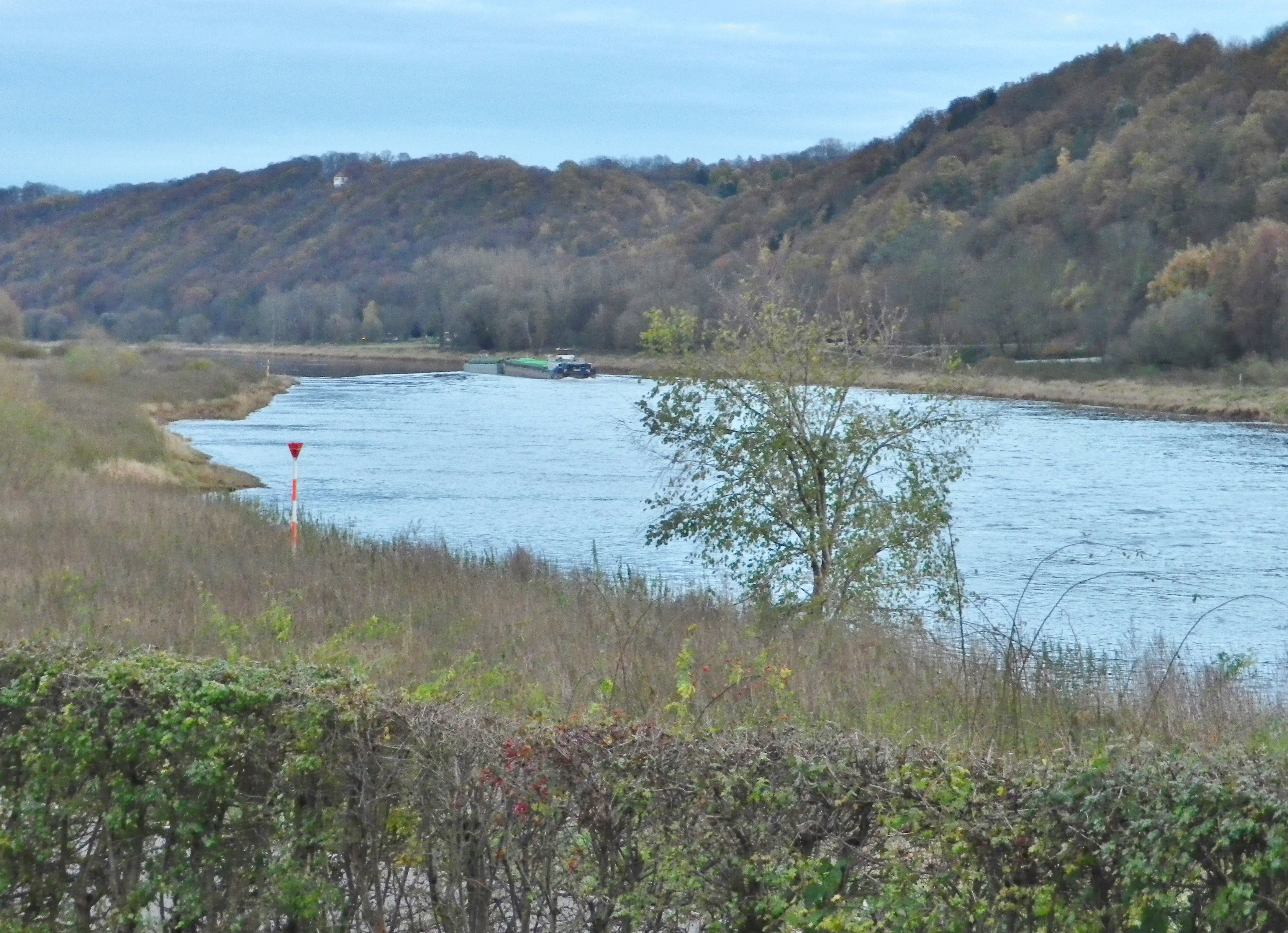
After a climb up a long staircase cut through rock, the trail continued atop a plateau. Here, the big cities were left behind, and the trail proceeded from hamlet to hamlet, Proschwitz, with its palace, to Winkwitz, to Rottewitz, to… Much of the time, the trail meandered high above the river, along the vineyards planted on the steep slopes leading down to it. From ridge line, I could see the sunlight reflecting off the river; and a bulwark of black clouds gathering on the horizon.
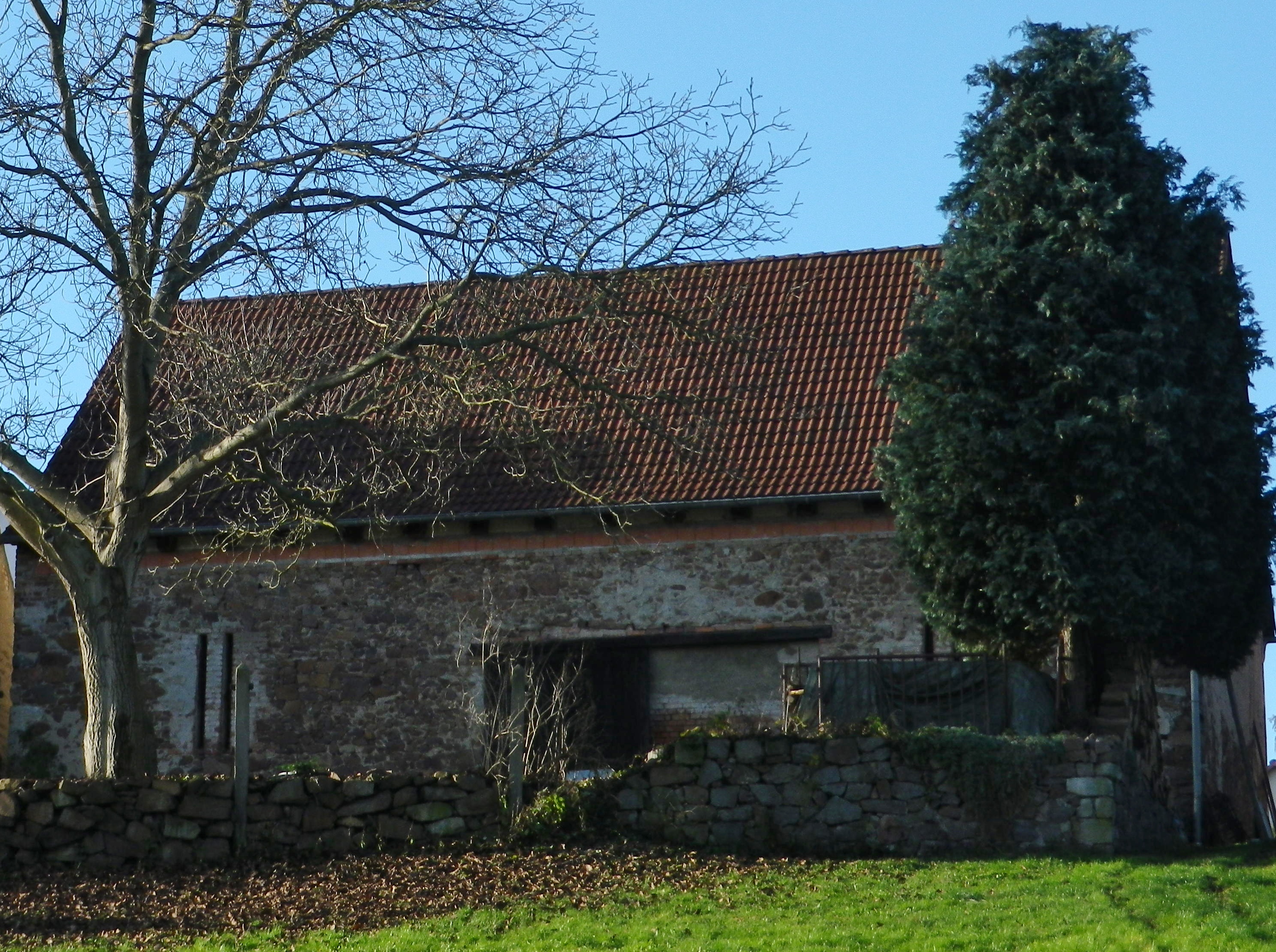
Looking to the east once atop the ridge, the rolling terrain was covered with fields. This part of Germany had very large farms, resulting in a visual effect less like a patchwork quilt, as it often appears in the western part of Germany, and more like a vast sea of soil to plow through. That, along with the hamlet-sized settlements, made this landscape seem starker, almost isolated. Then came Zadel. This is a village, with its own church, school, and historic center, as well as a small complex housing the Schloss Proschwitz Winery.
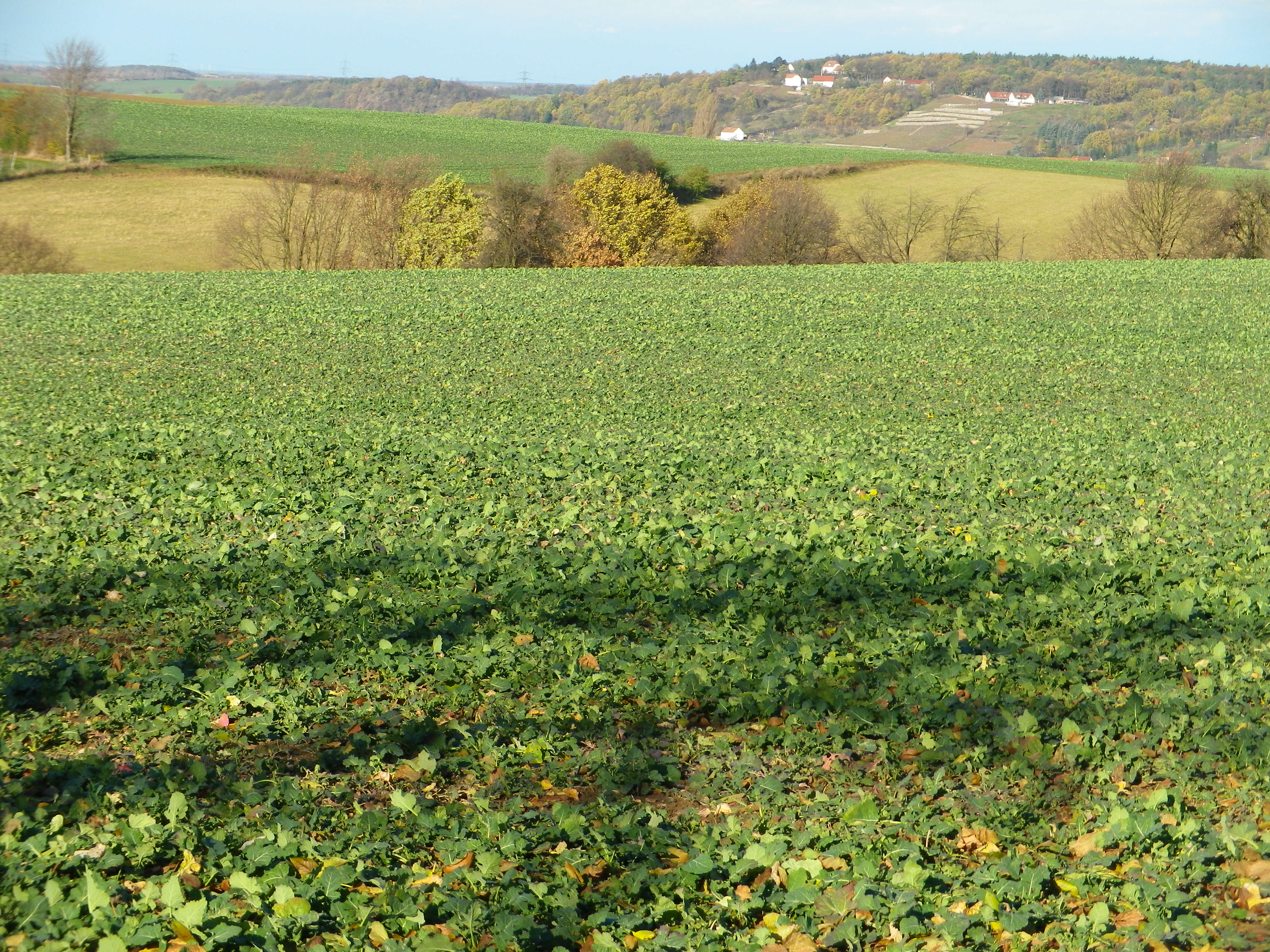
Since this was not a circuit trail, I had to find a way back to Meissen. On the right side of the Elbe, downriver from Meissen, buses serve the area, and they were somewhat infrequent on the day I was there. Consequently, when I reached Golk, just a few kilometers short of the end point at Diesbar-Seusslitz, I had to catch a bus back to Meissen, or risk not returning until much later. The dark clouds suddenly appeared overhead, accumulating rapidly. I sadly concluded that it was best to end the hike there. A driving rain began to fall just as I reached Meissen, where the wonders of the historic center, the birthplace of Saxon wine, awaited.
